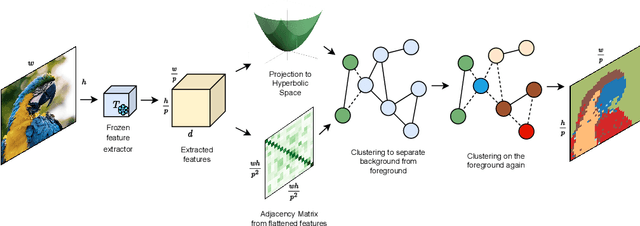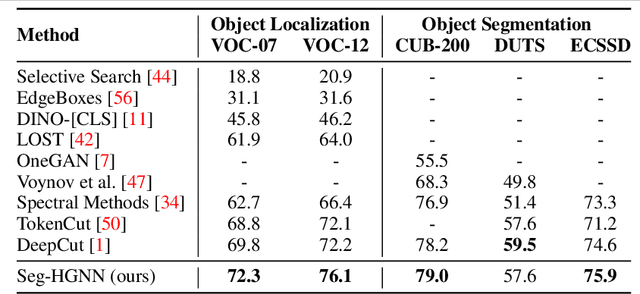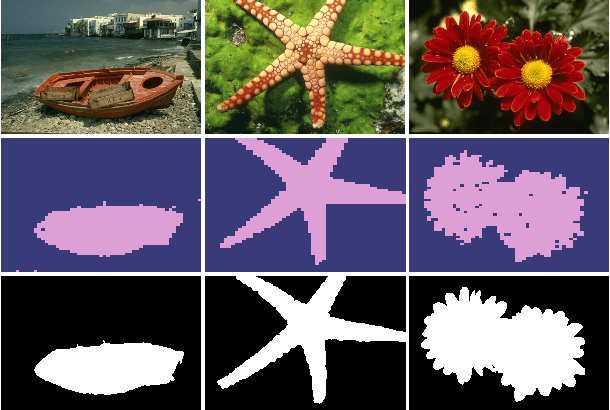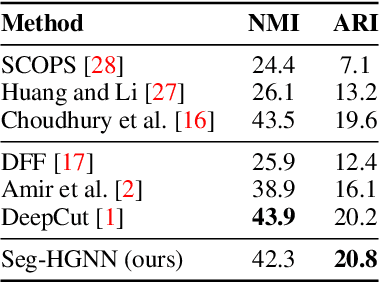Debjyoti Mondal
Seg-HGNN: Unsupervised and Light-Weight Image Segmentation with Hyperbolic Graph Neural Networks
Sep 10, 2024



Abstract:Image analysis in the euclidean space through linear hyperspaces is well studied. However, in the quest for more effective image representations, we turn to hyperbolic manifolds. They provide a compelling alternative to capture complex hierarchical relationships in images with remarkably small dimensionality. To demonstrate hyperbolic embeddings' competence, we introduce a light-weight hyperbolic graph neural network for image segmentation, encompassing patch-level features in a very small embedding size. Our solution, Seg-HGNN, surpasses the current best unsupervised method by 2.5\%, 4\% on VOC-07, VOC-12 for localization, and by 0.8\%, 1.3\% on CUB-200, ECSSD for segmentation, respectively. With less than 7.5k trainable parameters, Seg-HGNN delivers effective and fast ($\approx 2$ images/second) results on very standard GPUs like the GTX1650. This empirical evaluation presents compelling evidence of the efficacy and potential of hyperbolic representations for vision tasks.
KAM-CoT: Knowledge Augmented Multimodal Chain-of-Thoughts Reasoning
Jan 23, 2024



Abstract:Large Language Models (LLMs) have demonstrated impressive performance in natural language processing tasks by leveraging chain of thought (CoT) that enables step-by-step thinking. Extending LLMs with multimodal capabilities is the recent interest, but incurs computational cost and requires substantial hardware resources. To address these challenges, we propose KAM-CoT a framework that integrates CoT reasoning, Knowledge Graphs (KGs), and multiple modalities for a comprehensive understanding of multimodal tasks. KAM-CoT adopts a two-stage training process with KG grounding to generate effective rationales and answers. By incorporating external knowledge from KGs during reasoning, the model gains a deeper contextual understanding reducing hallucinations and enhancing the quality of answers. This knowledge-augmented CoT reasoning empowers the model to handle questions requiring external context, providing more informed answers. Experimental findings show KAM-CoT outperforms the state-of-the-art methods. On the ScienceQA dataset, we achieve an average accuracy of 93.87%, surpassing GPT-3.5 (75.17%) by 18% and GPT-4 (83.99%) by 10%. Remarkably, KAM-CoT achieves these results with only 280M trainable parameters at a time, demonstrating its cost-efficiency and effectiveness.
 Add to Chrome
Add to Chrome Add to Firefox
Add to Firefox Add to Edge
Add to Edge